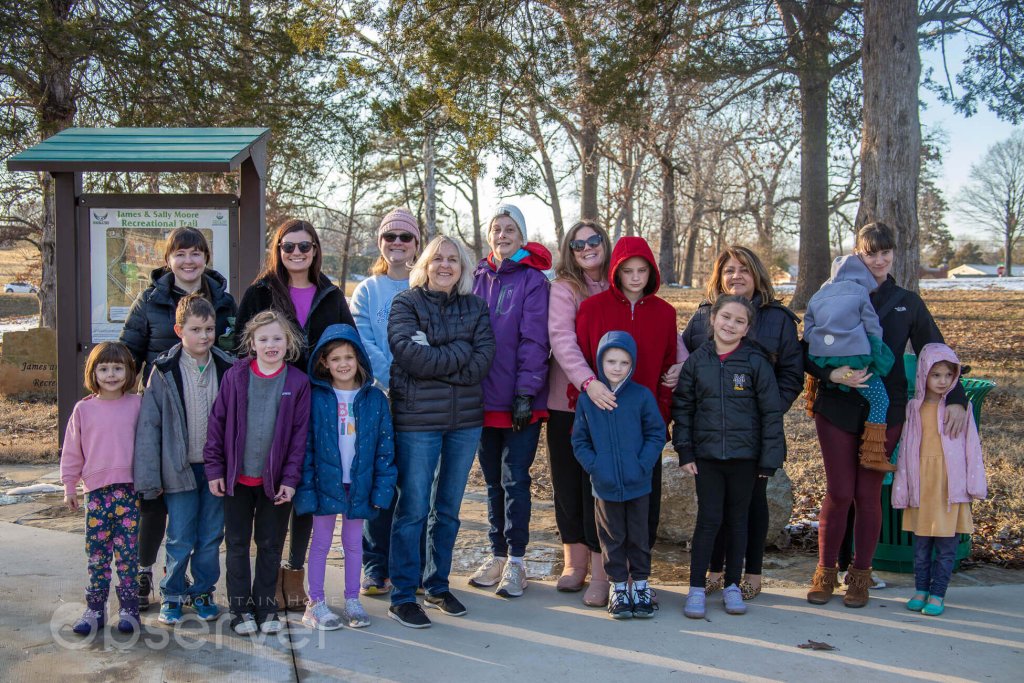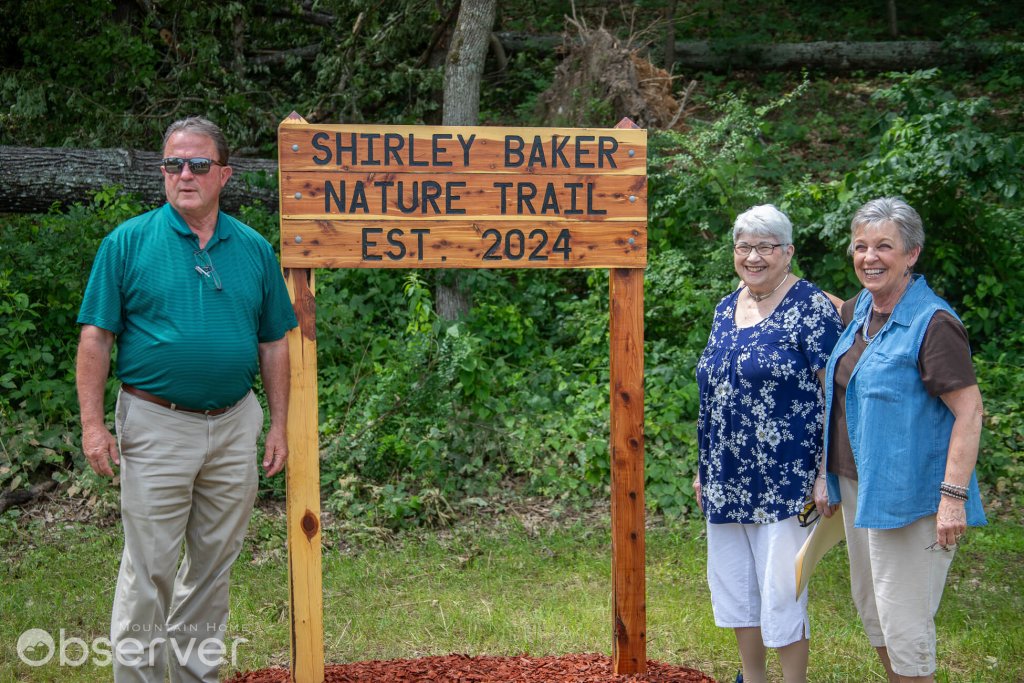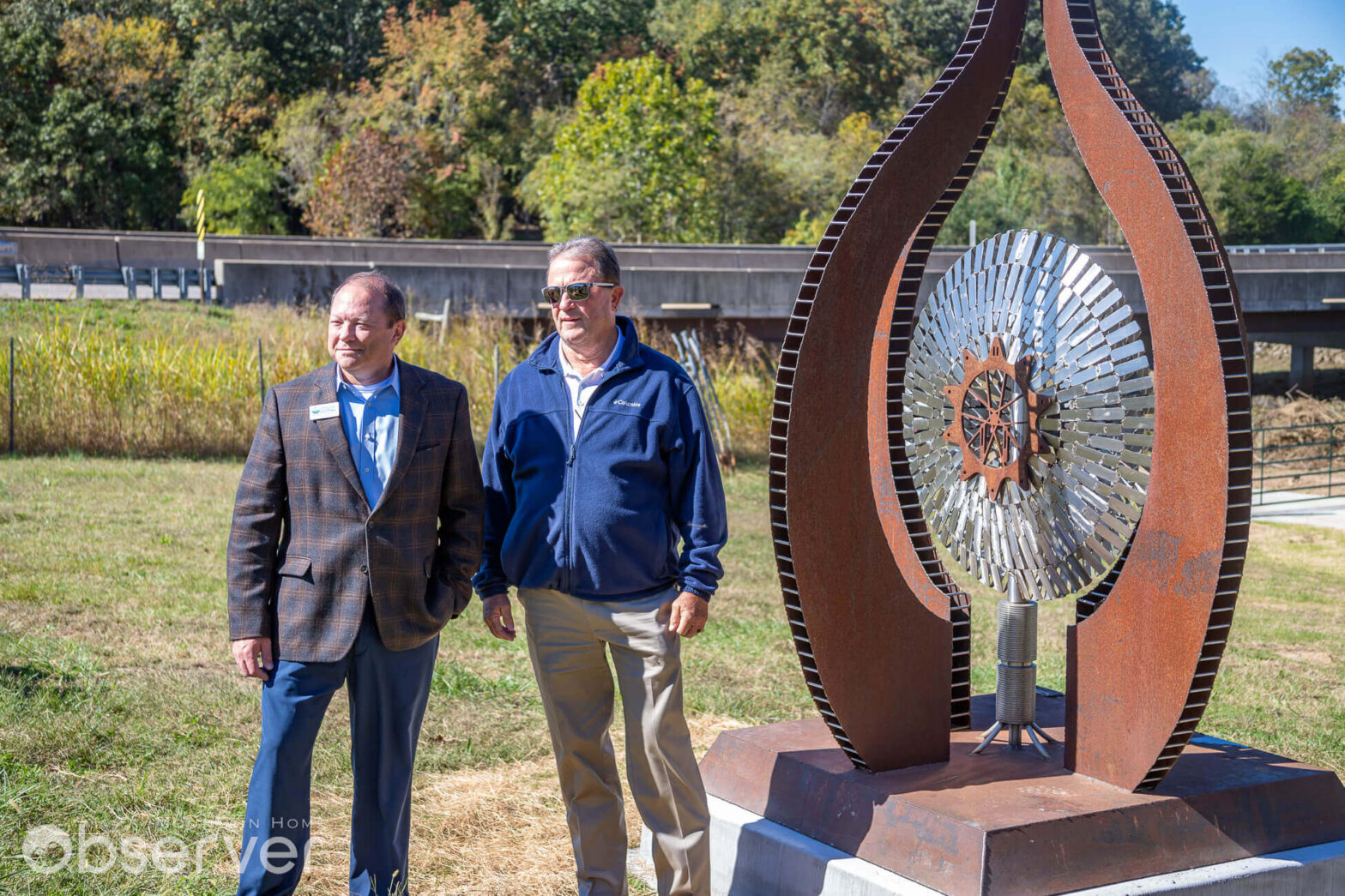Arkansas State University-Mountain Home has begun construction of solar-powered lighting along the James and Sally Moore Recreational Trail, the latest addition to a network of trails that has steadily evolved from a simple hiking trail to one of the region's premier outdoor destinations.
The new solar lighting system will improve safety and accessibility for hikers, runners and families who use the trail in the early morning and evening hours. Construction is currently underway with completion expected later this fall. The project is funded through a partnership with the Arkansas Department of Transportation.
“ASU-Mountain Home is excited to bring this significant lighting improvement to the trail system on our campus,” said Dr. Bentley Wallace, chancellor of ASU-Mountain Home. “Thanks to our funding partners at ARDOT, the college is able to add solar lighting to a large portion of the trail, providing better visibility for our hikers in the evening and early morning.”
The solar array continues a series of improvements that have made the campus trail a community attraction in recent years, drawing visitors from across North Arkansas.

Building on years of investment
The transformation of the James and Sally Moore Recreational Trail began several years ago when ASUMH and the City of Mountain Home worked together to improve the three-mile trail system that winds through the college campus and connects to the Mountain Home Greenway Trail system.
ARDOT first awarded the grant to install solar lighting in 2023. At the time, officials said the lights would be installed once an architect completed landscaping, which would include botanical gardens. This vision is now becoming reality with the current building.

Development of the trail gained momentum in October 2023 when the first public artwork was unveiled as part of the ASUMH/City of Mountain Home Art Walk initiative. The abstract sculpture, made of Corten metal with stainless steel accents by Minnesota artist Patrick Shannon, was funded by an anonymous donor and marked the beginning of an extensive outdoor gallery.
“The importance of the arts in our community cannot be overstated,” Wallace said at the initial unveiling, citing the combination of arts, education and outdoor spaces.
Art walk takes shape
The Art Walk project was dramatically expanded in 2024. Last August, the trail hosted a six-month exhibition of 15 large-scale sculptures by Massachusetts artist Dale Rogers.
Rogers' stainless steel and Cor-Ten steel sculptures attracted art enthusiasts from throughout the region. The community voted on their favorite pieces and selected works became permanent installations along the trail.
The project began under the leadership of Chancellor Emeritus Dr. Robin Myers and ASUMH Development Director Mollie Morgan. The city later joined Mountain Home to help secure the ARDOT grant.
Dr. Kathy Loyd, chairwoman of the Art Walk committee, noted last year that the exhibitions bolstered the region's growing reputation as an arts destination. The success has made Mountain Home an unexpected destination for outdoor art.
Educational and community programming

Over the years, various educational programs have taken place on the trail network. The StoryWalk Project, a collaboration with the Donald W. Reynolds Library, created a 1,600-foot area with 16 reading stations where families could enjoy children's books while strolling along the path.
The Baxter County Library regularly partners with ASUMH for special StoryWalk events. Families gathered to read stories displayed along the trail and offered themed activities and crafts. Most recently, the library hosted a winter event in January with the theme “How to Catch a Yeti.”
The trail network is increasingly connected to the broader Mountain Home community. The City of Mountain Home Parks, Recreation and Street Departments completed an extension that connected the ASUMH trail to the Shirley Baker Nature Trail in McCabe Park through an underpass under the Sheid Hopper Bypass.

Further connections are being planned. The city has secured funding for an interchange that will connect the trail to College Street through a new pedestrian crossing. The Baxter County Library Foundation received a $456,000 federal grant for the Library Hill Trail Project in December 2024 through the Arkansas Department of Transportation's Transportation Alternatives Program. The grant covers 80% of the funds needed for the approximately three-quarter mile trail, with the foundation now working to raise the remaining 20% of the project cost. Anyone who would like to support the path can contact the foundation at the following address: [email protected] or call 870-580-0705.
Why solar, why now
The decision to install solar lighting meets the ongoing requests of trail users while also being consistent with the university's sustainability goals. Early morning joggers and evening walkers have long demanded better lighting for safety and comfort reasons.
The new system will make the trail accessible to those whose schedules only allow exercise outside of daylight hours. This is especially important during the winter months when daylight is limited.
The solar-powered approach keeps operating costs low while demonstrating renewable energy technology to students and community members.
Future plans
While solar lighting represents the current state of development, further improvements are planned. The botanical garden is still in the planning phase and is intended to complement the art installations.
The Art Walk committee has announced plans to issue a call for local artists in 2025. This will provide an opportunity for regional talent to contribute alongside nationally recognized names such as Rogers and Shannon.
“Since arriving on the ASUMH campus, I have had the privilege of working with generous community donors, inspiring city leaders and progressive ASUMH leaders,” Morgan said. “Working on the Art Walk reminds me of how wonderful our community is as we support each other in creating special events for our region.”
Economic and health impacts
The improvements have transformed a simple campus amenity into a regional attraction. The trail now serves as an outdoor gallery, occasional educational venue, fitness facility and community gathering place.
Mayor Hillrey Adams, an ex-officio member of the Art Walk committee, has always supported the partnership between the city and the university. The collaboration has attracted new users to the trail system while supporting local economic development.
Art enthusiasts, families seeking outdoor activities, and fitness enthusiasts will all find reasons to visit Mountain Home. Your visits support local businesses while improving the community's quality of life.

The Art Walk committee includes representatives from the university and the city. The members include Dr. Wallace and Mayor Adams as ex officio members, as well as Dr. Eddie Dry, Christy Dyer, Mindy Fulcher, Dane Hustead, Beth Ivens, Arnold Knox, Dr. Loyd, Joe Miles and Morgan.
Looking ahead
The construction crews will continue to work on installing the solar lighting system in the fall. The project represents both a practical improvement and a symbol of the ongoing development of the path.
What began as separate campus and city routes has evolved into an interconnected network. Solar lighting will be particularly useful as the days get shorter, ensuring the trail remains accessible and safe all year round.
The journey has shown how a sustainable vision and strategic investments can transform municipal infrastructure. Each expansion, from the first trail connections to art installations to the current solar lighting, builds on previous successes.
During construction, the trail will remain open to the public seven days a week. Minimal disruption to trail access is expected during the installation process.
For updates on the solar lighting project and other campus initiatives, visit www.asumh.edu or follow @ASUMountainHome on social media.
